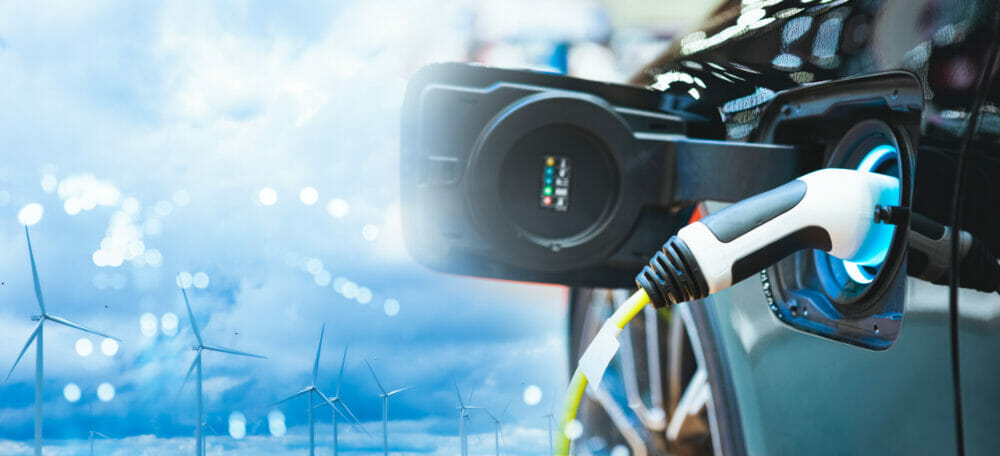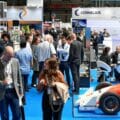Global targets driving forward the introduction of all electric vehicles (EV’s) have created multiple considerations for EV battery development. These include a range of factors such as average journey distances, charging times, charging infrastructure, and as a consequence, optimisation of battery range. The weight, size and compactness are the main considerations within the battery technology itself, that is, the energy density of the battery cells.
With such high volumes projected of batteries with multiple sub cells, the combined performance of connections within the battery construction, battery management and sensing are vital areas for consideration. Additional key factors include any manufacturing process effects on the battery components, the speed and cost of production, and of future importance, end of life recyclability.
As a technology which has been widely used for joining plastics, wire splicing and metal connector welding within the automotive, and other industries for decades, it is a natural progression that ultrasonic welding is fast becoming a process for many joining applications on components being manufactured for Hybrid and full Electric Vehicles.
Historically, this fast, efficient, measurable, and environmentally friendly process has delivered joint quality and commercial advantages for many manufacturers. The advent of Electromobility has now opened up a wide range of new opportunities for ultrasonic welding on components such as high voltage interconnectors tabs and foils as part of the battery, together with battery management components and sensing harnesses.
One of the key attributes of direct ultrasonic welding is that it is an “on demand” process, delivering optimised weld energy at high efficiency levels into the joint. Involving only the joint materials themselves, the process supports and of life recyclability. The process is fast, easily automatable for high volume welding, and can join dissimilar materials. It also delivers excellent results with highly conductive materials, and it is particularly good with thin copper and aluminium, thin wires, and also multi-layer sheets. The larger conductor / termination sizes and cross sections involved in EV applications require high power ultrasonic oscillations using Telsonic’s Torsional technology to deliver high levels of energy within very short process times to produce the weld.
Over the last decade Telsonic has kept pace with the growing e-mobility market, developing and perfecting the techniques and machines required for these applications based upon their Linear, SONIQTWIST ® and patented PowerWheel ® technology. Another important factor in Telsonic’s success in these applications is their high-power MAG based generator capability which allows large cross section single point welding.


Battery cell construction and Interconnectors
Energy storage systems for EVs have a modular design and consist of single battery cells that are joined into modules which are then grouped to form a battery pack. The cells may be secured using metal or plastic support structures to leave space for state-of-charge related swelling.

applications
The joining application opportunities include individual battery construction and the interconnection of the cell arrays. The commonly employed Li-ion battery has three different cell types which are solid cylindrical cells, soft pouch or polymer cells, and solid prismatic structure types. The pouch type battery construction is an especially good fit for the ultrasonic weld process where typically, thin copper, nickel plated copper, and aluminium materials are required to be joined.
The various battery structure types generally involve Busbar interconnections for series or parallel connections, and the materials used for wire conductors or their rigid connections are mainly copper and aluminium. Ultrasonic technology can be employed as the joining method used on a variety of tasks in battery cell construction and their subsequent interconnection.
This involves busbars, prismatic foil and tab welding. These operations are ideally suited to Telsonic’s Linear Technology MPX range, which has been developed for wire terminations braided connectors and pouch tabs, with the capability to deliver low or high-power joining as required for the specific application.



for wire cross-sections of 4mm2
to 50mm2
Copper -and
70mm2
-Aluminium
High Power Ultrasonic Joining
A particular “fit” for the Ultrasonic joining process is higher power conductor to terminal joining for EV motive systems.
In these applications it can be difficult to maintain process control and quality levels, with the larger cross section conductor cables and their associated connectors, using alternative methods.
In these applications, Telsonic’s new PowerWheel ® Technology, integrated within the Telso ® Terminal TT7 system, delivers torsional ultrasonic energy which enables large cross section area wires to be bonded, with narrow bonding areas, and importantly, good part accessibility with directly applied weld force.
Telsonic technology can conform to the automotive performance and design validation specification standards which have been developed by Industry OEM’s and their Tier one suppliers for ultrasonically welded wire terminations.
Wire Splicing and Wire End Consolidation
Using ultrasonic technology to weld wire harness assemblies has become recognised as the process of choice for sequential splicing for the many different wire cross sections required for the various power distribution supply aspects of any high-volume production vehicle type.


Ultrasonic cable splicing machines from Telsonic are used to splice or end consolidate cables ranging from 0.26mm2 up to 75mm2 with a process capable of integration with real time Manufacturing Execution Systems (MES). Again, Telsonic’s wire splicing technology can conform to industry design standards for wire splicing.



Vertical Ultrasonic Torsional Welding for EV Applications – TSP Range
Historically this ultrasonic process has been used for hard-to-reach applications at a range of different power settings, and for welding within recesses and welding onto ceramics (IGBT). The main reasons for and advantages of using the torsional process over conventional ultrasonic welding is the “reach,” plus the process is gentler on sensitive or delicate product assemblies.


Low force / power torsional machines are ideal for foils, flat conductors, battery end cap tabs and delicate sensing components. Applications include collector tab welding on cylindrical cell electrode foils and collector tabs to end caps. Conversely, the same technology can be used with higher force and power to weld round stud type high power connectors requiring direct force over the joint and encapsulation of the stud male features.



Telsonic’s TSP range are supplied as standalone machines, or modules for integration Into automated systems for the production of connectors and battery cells.








